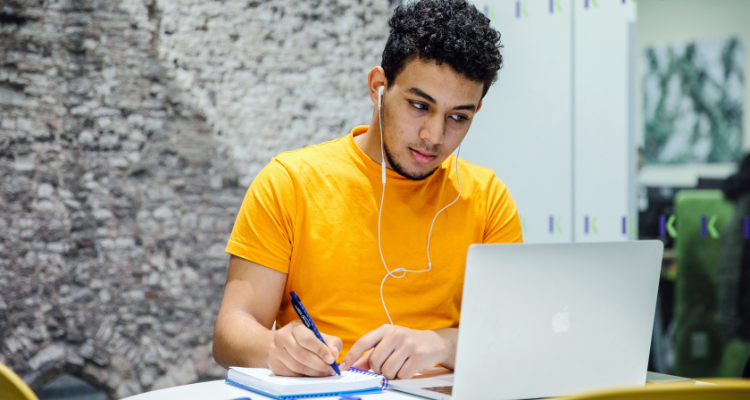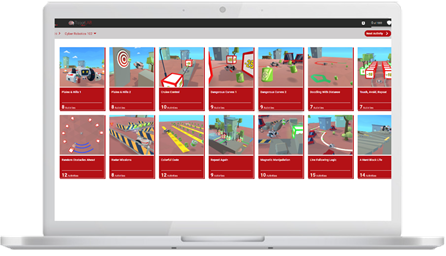Incorporating the coronavirus crisis in course content can leverage students’ curiosity while showing them the real-world applicability of what they’re learning.

Educators frequently hear from their students, “How am I going to use this stuff in the real world?” Now is the perfect time to answer that question. The coronavirus pandemic presents a unique opportunity for educators looking to underscore the relevancy of their subject matter.
Students, the vast majority of whom are learning remotely and living under social distancing guidelines, are experiencing this emergency every day. Teachers can draw upon the crisis that our nation faces to convey valuable lessons about a host of different subjects, as well as emphasize the importance of their disciplines in the “real world.”
IDENTIFY LEARNING OBJECTIVES
Begin with an assessment of the current curriculum and the primary objectives of each unit. Then consider ways these objectives might be achieved using examples from the current situation.
For example, one key concept in social studies is the balance between individual liberty and collective health, safety, and well-being. The pandemic clearly shows the tension in creating policies that will uphold the rights of the individual while also preserving the overall health of the community.
A conversation about this friction would make for an engaging debate or persuasive writing assignment. Using the pandemic as a framework, create lessons around elements of the tension such as the following:
Cell phone tracking and possible violations of the Fourth Amendmen
Statewide lockdowns and the rights of habeas corpus.
The rights of protest and assembly versus social distancing rules.
How can the government shut down private business?
Ask students to examine the consequences of public policy in their communities.
MAKE IT RELEVANT
Connect concepts in the curriculum to current events. The study of American government typically relies heavily on historical events, but the pandemic provides an opportunity for modern examples.
For instance, a lesson might focus on the American conception of federalism. According to Supreme Court Justice Louis Brandeis, federalism allows the states to become “laboratories of democracy,” allowing each to try “novel social and economic experiments…” Today, we see the laboratories at work.
Assign students two different state governors—one from their home state and one from a neighboring state—to research. Ask, “How did Covid-19 affect their respective states?” and “How were the governors’ responses similar or different?” Examining differing results in the current context makes the lesson more timely for students than a historical hypothetical.
DON’T REINVENT THE WHEEL
There’s no need to scrap a syllabus or modify lesson plans extensively. Many curricula likely remain applicable to world events. Remain flexible, keep an open mind, and stay informed.
For example, when a group of sheriffs publicly refused to enforce the Michigan governor's quarantine orders, I sent the sheriffs’ press release to my class and asked the students to consider how it fits into our conversation on civil liberties during a crisis. The prompt noted how different news organizations portray the sheriffs’ dissent in different ways to emphasize how the media can shape a narrative.
Obviously, we can’t all stay glued to the media around the clock. Lighten your load by asking the students to find parallels between the curriculum and current events. For example, I asked students to identify the principles of the Constitution in the news. Students cited the Covid-19 stimulus bill as an example of separation of powers. One young man determined that the measures states are taking to uphold voting rights during the pandemic represent Americans’ commitment to popular sovereignty, even during a crisis. Having the students make connections between curriculum and current events empowers them and allows for student-led inquiry.
Professional learning communities—the networks we have formed on social media or colleagues we meet with via videoconference—are valuable resources for curriculum development around the pandemic. I have a weekly meeting with a colleague to discuss ways to make the curriculum relevant to our students, adhering to standards while also incorporating world events in a meaningful way.
LEVERAGE THE UNCERTAINTY
When Covid-19 first struck the United States, my students were clamoring for facts on the virus. However, they faced the same problem that everyone else did: The seemingly endless amount of news on the virus proved difficult to decipher. Moreover, much of the information was conflicting.
Never has there been a more critical time in recent history to emphasize the importance of a discerning and even skeptical approach to news and information.
Present students with a website or newspaper article focusing on the virus or the nation’s response. Ask students to evaluate the source using the CRAP test, which stands for currency, reliability, authority, and purpose/point of view.
When was the resource published? Has it been updated or revised? Could circumstances have changed since it was published?
Are there references, citations, graphs, or footnotes? Is there sufficient evidence to support the author’s claims?
Who is the author or publisher? Can they be relied upon?
Does the author or publisher have an agenda? Are they trying to persuade you? Can you detect bias?
FIND REAL-WORLD APPLICATIONS
Science and math teachers can use the pandemic to answer questions that students may have about their own safety and well-being. Consider ways to develop lessons that help decode the often-opaque and jargon-filled language of the everyday news. Easy questions like “Why is it called ‘herd immunity’?” and “What is the process for developing a vaccine?” can lead students to better understanding of the situation.
Make connections between these objective findings in all academic fields and students’ lives. Explain how a vaccine might allow for more freedom of movement or the ability to visit grandparents without fear. Using the disease as an example, students can learn how “comorbidities” such as obesity or smoking can put individuals at heightened risk, as well as the importance of regular checkups and staying healthy.
By helping students understand the news—how it directly affects their lives and the well-being of their loved ones—we underscore to our kids that the material they learn every day in the classroom has a pertinence beyond the walls of the school.
Keep learning during COVID-19 with RobotLAB and CoderZ!

CoderZ is an online educational environment that improves students 21st century skills, while they are having fun programming their own virtual cyber robot. CoderZ and RobotLAB has different lessons to do at home! Check them out Here
